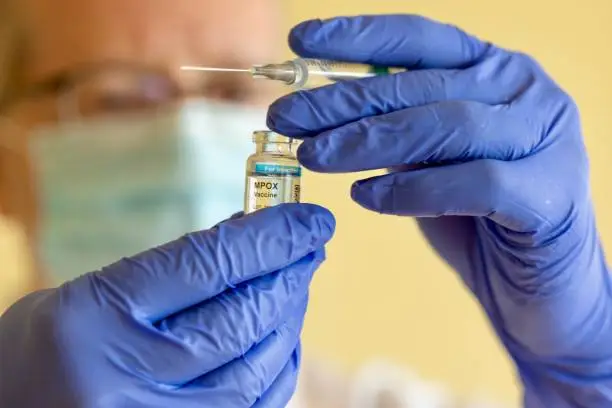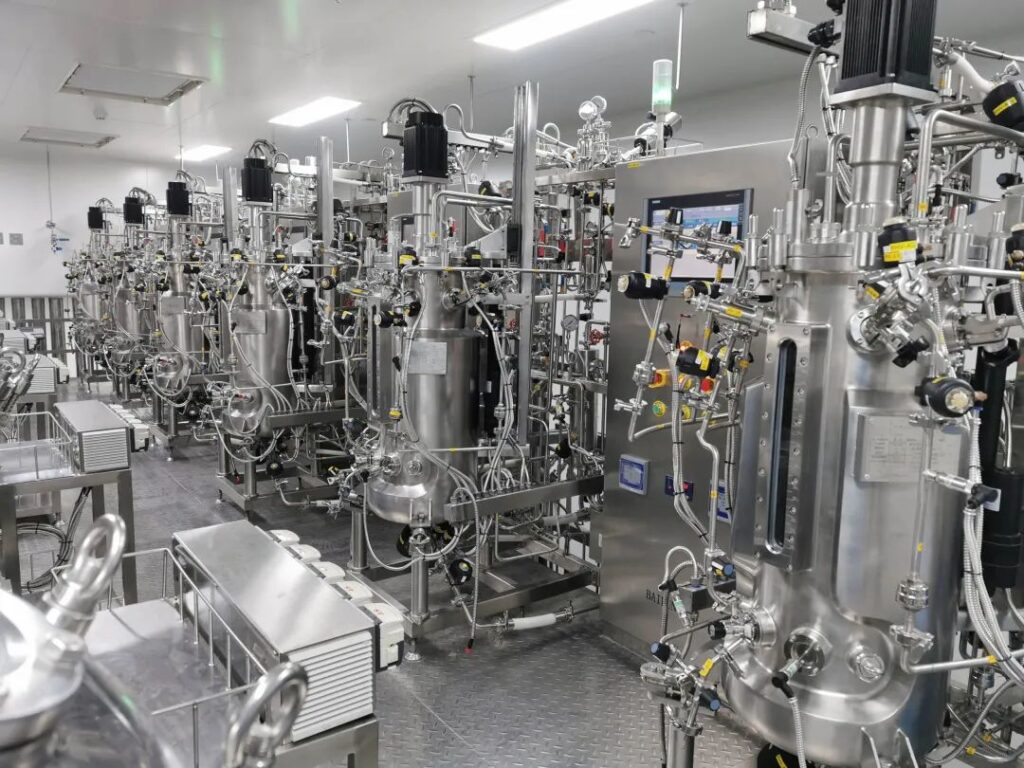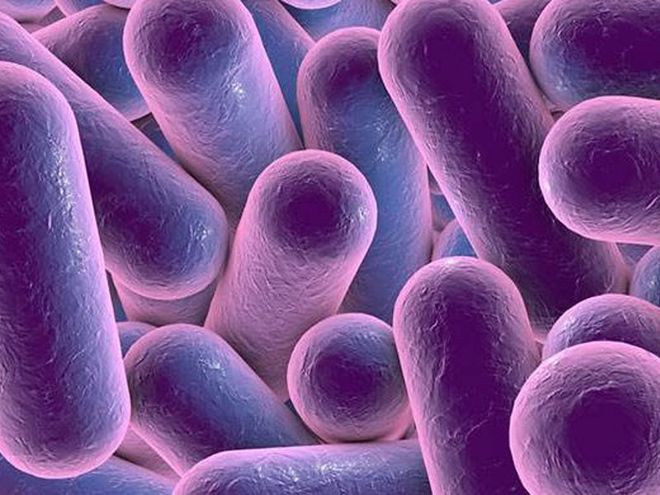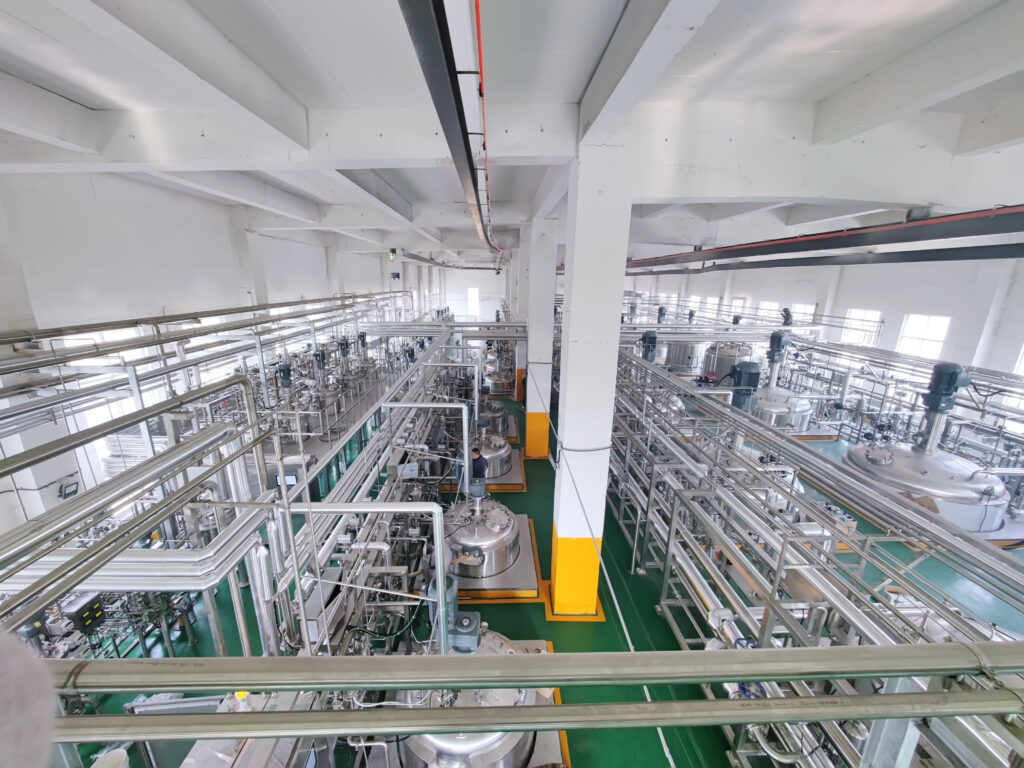
Bacterial vaccines come in various forms, each tailored to the distinct biological traits of the bacteria it targets. These vaccinations vary in persistence, immune system preparation, and formulation, affecting how frequently booster shots are required.
Knowing these kinds of vaccines can help you understand the significance of each and how vaccines affect the body. So, what are bacterial vaccinations, how do they function, and what kinds are available? Let’s look further into this to comprehend the range and potency of these immunizations!

What Are Bacterial Vaccines?
Bacterial vaccinations, therefore, make our immune system familiarized with how certain microorganisms look like and, subsequently, how to combat them. These vaccinations include giving our bodies a controlled dose of the bacteria or parts of it.
As a result, our immune system develops dilutions of the bacteria and poise for action in case of an attack from infections. Because of this procedure, we become “immune.”
One advantage of bacterial vaccines is the prevention of bacterial diseases, while antibiotics are used to treat bacterial diseases after they have taken root. That is why it is important to understand the difference between bacterial vaccinations and antibiotics since the former activates our immune systems to keep protection for years while the latter directly targets the bacteria.
Bacterial Vaccines Vs. Antibiotics
Why do we need bacterial vaccines while we have antibiotics? Vaccinations and antibiotics are two very different things. The generation of antibiotics is reactive; that is, it only comes into play once an illness has set in. It encompasses bacterial diseases that work by eradicating the bacteria or curtailing their proliferation.
Vaccines, on the other hand, are preventative measures that work by preparing the immune system to be ready to fight disease in case it encounters the pathogen. Vaccines need to form part of our shield because bacteria that are resistant to antibiotics have risen through the use of and or abuse of drugs.
One way to reduce antibiotic usage is by avoiding infections through bacterial vaccinations and reducing the cause of antibiotic dependency. Vaccinations are, therefore, a communal and individual health strategy that preserves the effectiveness of antibiotics for future generations.
Let’s examine the various bacterial vaccinations and how they are designed to combat particular illnesses.
But wait;
How Do Bacterial Vaccines Work?
Bacterial vaccinations elicit an immune response by exposing our bodies to an “impression” of the bacterium. This may entail using weakened or inactivated microorganisms, bacterial fragments, or even inactivated toxins released by certain bacteria.
These vaccinations teach our immune system by simulating an infection without making us ill. Each form of bacterial vaccination functions differently depending on the bacteria they protect against and the manufacturing process,
Because it takes time for our immune systems to develop antibodies, you may wonder how long they remain immune after getting a bacterial vaccine. Although the precise timing varies by vaccine type and individual immune responses, bacterial vaccines typically take a few weeks to a month to start working.
Why Bacterial Vaccines Are Essential
Vaccines work against bacteria and protect your body from dangerous illnesses. Many vaccinations particularly target bacteria by priming the immune system to identify and combat bacterial diseases.
They supply the body with innocuous bacterial components like proteins, toxins, or polysaccharides. By triggering an immune reaction, the body learns to identify and eliminate the bacterium should it come into contact with it again.
For instance, if meningitis, which is brought on by Neisseria meningitidis, is not treated right away, it can result in deadly complications in a matter of hours. Due to the risk, many nations have made the meningitis vaccine mandatory for children and adolescents.
When did the meningitis vaccine become mandatory, you ask? For instance, immunization in the United States started widely advocating in the early 2000s for specific age groups and those in high-risk situations, though other nations embraced it at different times.
So, Do Vaccines Work Against Bacteria?
Yes. Let’s now examine the primary categories of bacterial vaccinations and the distinct ways they offer protection.
Different Types of Bacterial Vaccines
Bacterial vaccines come in various forms, each tailored to the distinct biological traits of the bacteria it targets and intended to target certain infections. These vaccinations vary in persistence, immune system preparation, and formulation, affecting how frequently booster shots are required. Knowing these kinds of vaccines can help you understand the significance of each and how vaccines affect the body.

Let’s get going!
1. Inactivated (Killed) Bacterial Vaccines
To prevent infection, the germs in inactivated vaccinations are in an inert form or have been destroyed already. These vaccines create a powerful immunological memory against the bacterium by making the immune system react as if attacked.
One well-known example of an inactivated vaccine is the pertussis vaccination in the DTaP (diphtheria, tetanus, acellular pertussis) shot. Because whooping cough (pertussis) can be fatal for very young children, the DTaP vaccination schedule intents to provide early protection.
Since inactivated vaccinations don’t contain live microorganisms, they are usually safe. However, because the immune response might wane over time, they occasionally need booster doses to keep their protection intact.
2. Live-Attenuated Bacterial Vaccines
Live-attenuated vaccinations have a weakened strain of the bacteria. Because the germs in this vaccine are living (albeit weak) and may proliferate inside the body without harming healthy people, it elicits a robust immune response.
One example is the BCG vaccine for tuberculosis (TB), which is used extensively worldwide. Bacillus Calmette-Guérin, or BCG in short, was created by scientists and is named after them. A strain of Mycobacterium bovis, closely related to Mycobacterium TB, is included in the vaccine; however, it has been altered to be innocuous while promoting immunity.
Although live-attenuated vaccinations are practical, not everyone should receive them, especially those with compromised immune systems. Why? Even a weakened microbe has the potential to infect them.
3. Toxoid Vaccines
Some bacteria emit toxins, or poisons, which induce disease symptoms and direct injury. For example, a strong toxin that damages the neurological system is released by tetanus bacteria. Instead of focusing on the bacteria, toxoid vaccinations target these toxins.
One of the best examples of a toxoid vaccination is the tetanus vaccine. The immune system can be trained using an inactivated form of the toxin to neutralize it without coming into contact with the real thing.
Worldwide, toxoid vaccinations are part of regular pediatric immunization programs because they are incredibly safe and help sustain immunity. Toxoid vaccinations can effectively counter the effects of bacteria that produce toxins.
4. Subunit Vaccines
Subunit vaccines include only particular components of the bacterium, such as proteins or sugars, from its surface rather than the entire organism. Because of their high level of targeting, these vaccinations provide immunity with fewer adverse effects.
The Neisseria meningitidis vaccine is a well-known subunit vaccine that targets the germs that cause meningococcal meningitis, a severe infection of the brain’s lining. Our immune system can identify and combat Neisseria meningitidis without running the danger of developing a severe infection thanks to the subunit method.
5. Conjugate Vaccines
A specific kind of subunit vaccine known as a conjugate vaccine attaches bacterial polysaccharides—sugar molecules found on the surface of bacteria—to a protein carrier. Because of this connection, the vaccination works particularly well in young children, whose immune systems might not react well to polysaccharides independently.
One example is the vaccine against Haemophilus influenza type b (Hib). Before the Hib vaccine, young infants frequently contracted bacterial meningitis and other serious diseases brought on by Haemophilus influenzae. Conjugate vaccines have been effective in significantly lowering these infections.
6. Polysaccharide Vaccines
Polysaccharide vaccines use purified polysaccharides from the bacterial capsule. The immune system targets encapsulated bacteria because they directly trigger an immunological response to these sugars, which create a barrier of defense around some bacteria.
Since polysaccharide vaccines are not connected to protein carriers like conjugate vaccines are, they frequently elicit a less robust immune response. Usually, they work less well on young children.
One example is the meningococcal polysaccharide vaccine, which targets the bacterium Neisseria meningitidis, which causes bacterial meningitis. Booster doses are frequently required to maintain immunity because these vaccinations cause a limited immunological memory.
7. Recombinant Protein Vaccine
Recombinant protein vaccines use genetically engineered proteins from bacteria. This method helps to produce particular bacterial proteins without utilizing the real bacteria. The immune system recognizes these proteins and launches an attack.
Recombinant technology, for instance, is used in several contemporary vaccinations against illnesses like hepatitis B, which is viral rather than bacterial. Because recombinant protein vaccines are safe for people of all ages, including those with impaired immune systems, their potential for preventing bacterial infections is growing as genetic engineering progresses.
8. Virus-Like Particle (VLP) Vaccines for Bacterial Protection
Virus-like particle (VLP) vaccinations are mainly used to prevent viral infections, but the technique is also being modified to avoid bacterial infections. VLPs are particles that mimic viruses in structure but lack genetic material, which prevents them from replicating or spreading illness.
Regarding bacterial vaccines, VLPs might have bacterial antigens on their surface that would cause the immune system to react as though the infection were present. Although still in the experimental stage, this strategy holds promise for developing highly immunogenic vaccines against bacterial infections that have proven challenging to target with conventional vaccine methods.
Common Bacterial Vaccines and Their Uses
Let’s review some bacterial vaccines that are now often administered over the globe.
DTap Vaccine
The DTaP vaccine guards against pertussis, tetanus, and diphtheria. The DTaP vaccination schedule includes booster shots to guarantee long-term protection and doses at two, four, and six months. A mainstay of children’s vaccination regimens, this combination vaccine significantly lowers the prevalence of two formerly prevalent and frequently fatal illnesses.
Pneumococcal Vaccine
The pneumococcal vaccine guards against Streptococcus pneumoniae, which can cause bloodstream infections, meningitis, and pneumonia. The pneumococcal vaccine has prevented serious respiratory and invasive illnesses, saving many lives. Doctors recommend it for infants, individuals over 65, and anyone with specific medical conditions.
Meningococcal Vaccine
Targeting different strains of Neisseria meningitidis, the meningococcal vaccine is particularly crucial for adolescents and young adults more susceptible to meningococcal illness. For instance, because of the danger of epidemics in dorms, college students are frequently obliged to get this vaccination.
Tetanus Vaccine
Although tetanus is not communicable, it is essential to maintain your immunity with booster injections. A child’s typical tetanus vaccination regimen consists of multiple doses, with booster shots required every ten years to maintain immunity. Since severe muscle stiffness and spasms can result from tetanus, immunization is essential for prevention.
Salmonella typhi
Salmonella typhi is prevented by the typhoid vaccine. Since typhoid fever is still a significant health risk in regions with inadequate sanitation facilities, this vaccination is especially advised for visitors to areas where the disease is common. If left untreated, typhoid fever can result in severe fever, weakness, stomachaches, and even death.
The Future of Bacterial Vaccines
Despite the success of vaccines so far, scientists are continuously striving to enhance their effectiveness. The demand for developing vaccines for diseases traditionally treated with antibiotics has escalated due to the rise in resistance.
Scientists are also exploring methods to enhance the safety and effectiveness of vaccines by developing synthetic vaccines and creating innovative delivery systems.
The impact of vaccinations is crucial for health, serving as a strong safeguard against harmful pathogens that could otherwise spread unchecked and create chaos.
Understanding the types of vaccines and how they work helps us value the science that protects our well-being and safety more effectively. It paves the way for ongoing advancements in vaccination research that will further enhance global health and save lives.
Conclusion
A mainstay of contemporary medicine, bacterial vaccinations provide defense against a wide range of potentially fatal illnesses. The variety of bacterial vaccines, ranging from inactivated and live-attenuated to more complicated subunit and conjugate vaccines, reflects the intricacy of the microorganisms they target and the creative tactics researchers use to fight them.
Knowing how vaccinations function and how they differ from antibiotics emphasizes how crucial it is to use reactive and preventive strategies to battle against bacterial infections. Thanks to carefully planning vaccination schedules, such as the DTaP vaccine schedule and the tetanus shot schedule for children, people are guaranteed timely and efficient protection throughout their lifetimes.
Future developments in tailored medicine and technology can further improve the effectiveness and accessibility of bacterial vaccinations. International cooperation and ongoing public health initiatives will be essential to overcome obstacles like antibiotic resistance and vaccine hesitancy and guarantee that the advantages of bacterial vaccines are experienced globally.
Get Cutting-Edge Bioreactors by Collaborating with Bailun Technology
If you are prepared to positively impact the world’s health by creating bacterial vaccinations, begin with the appropriate tools. Advanced bioreactors and specialized lab equipment from Bailun Technology simplify the production of vaccines, increasing the process’s dependability, efficiency, and safety. Our cutting-edge machinery is made for both large-scale production and research labs, ensuring accuracy and quality at every stage.
To make your vaccine research and development a reality, collaborate with Bailun Technologies. To learn more about our product line and how our technology may help you in your vaccine creation endeavors, contact us right now.

